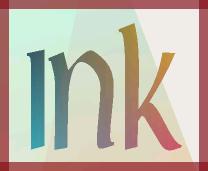|
September 2000
This month I got to find out about the real costs of color ink jet printing at home vs copying at a commercial shop. Our story began innocently enough -- I had just finished an article on Partition Magic 5 for Warpstock as a 'thank you' from SCOUG (watch for it here next month). The article ran 6 pages long, and we were going to make 200 copies printed back-to-back, collated and stapled. What with Carla's great visual formatting job, the final product had a first page laid out with graphics and flowing text, and had three color graphic images. The 2nd page used an interesting single column at the top and double column for the rest of the article, all black and white. Anyhow, in a moment of "how tough can this be?" I offered to print the cover page in color -- about 220 copies, to allow for the inevitable. We thought the color would have a much better visual impact than boring old black only. Then I checked out Kinko's and Staples to price the job. The bottom line was about $1.00/page. That's right, folks, over $200 for a relatively simple print job. That big expense wasn't for the back to back printing part either; they want that kind of money for any sort of color copying! So (yes you knew I'd do this, right) I decided to do the job on my trusty Lexmark Optra Color 40 and save a bundle. 1 1/2 days later my print job is ready to be stapled and sent to WarpStock, and I've done a rough estimate on the costs. Currently, Lexmark cartridges run as follows, list price (note that you can save $5/10 per cartridge by shopping on line and comparing prices):
Ok, doing the math, with 1 high yield black cart and 1/4 of a high yield color cart for around $53, and figuring in 1/2 ream of premium ink jet paper at about $4, ka-ching, say about 14 cents a page. Compare that with the Kinko's/Staples/Office Depot prices. Obviously do it at home for small color runs of business presentations. I know we all gripe about the cost of ink cartridges, but compared to the commercial alternative, color ink jets can be very cost effective. And originals do look better than copies. By the way, with the Lexmarks, get the High Yield cartridges; for the extra few bucks, they seem to offer about 1 1/3 times the amount of coverage. Anyhow, the good news is that the Optra performed flawlessly, without a single misfeed or paper jam during the entire run. Now having said how you should do it, I must confess that my particular print job took a little more; in fact it took well over a high yield cartridge, and in reality, the job was a lot more chaotic than described in my ideal how to. You see, I had just a little ink left in my standard black cartridge, so I monitered print quality of page 1 (printing in small batches of 25) and changed cartridges when the black print output started fading. Then I put in a new black standard cartridge figuring that should be plenty of ink for about 400 sheets (200 pages back to back). Hah! I finished printing the complex color page 1, and went off to dinner with the printer grinding out the second side of 100 copies. Yup, you guessed it -- I came home to see about 1/2 my final output ruined because the black ink got used up and printed less and less and less on side 2... No way to go back and pint over the messed up 2nd side, either. The moral of this story is to never underestimate the amount of ink something will take, and be around to monitor what happens as you print. Next month, I'll cover in some depth the best papers for regular printing (e.g., not photos) with inkjet printers like the Lexmark and Epsons. As a teaser, my current favorite is Georgia-Pacific Premium Ink Jet paper, a 24# 94 rated ultra-brite paper that will let you print on both sides without bleeding thru. At Staples, I just paid $6.98 for a ream (plus 25% Free, it says here). I can verify that it prints on both sides without problem, and would be/is great for business presentations of mixed text and graphics. I know most people hate to spend real money on paper, but compared to the cost of ink, sub $10 per ream paper is a negligable cost in inkjet printing. Also the visual look of your printed page is much snappier than with that cheap Xerox paper you get on sale. Reach me at Tony@scoug.com.
By day, Tony Butka is a bureaucrat for Los Angeles County. In his other life he lives in a loft surrounded by computers, printers, and a host of vinyl records.
|









